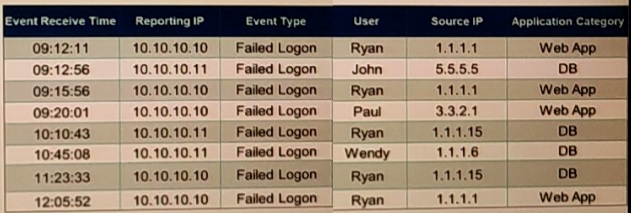Master Fortinet NSE5_FSM-6.3 Exam with Reliable Practice Questions
Which statement about global thresholds and per device thresholds is true?
Correct : A
Threshold Management: FortiSIEM uses thresholds to generate alerts and incidents based on performance and security metrics.
Global Thresholds: These are default thresholds applied to all devices and metrics across the system, providing a baseline for alerts.
Per Device Thresholds: These thresholds can be customized for individual devices, allowing for more granular control and tailored monitoring based on specific device characteristics and requirements.
Usage in Performance Metrics: Both global and per device thresholds are used for performance metrics to ensure comprehensive and precise monitoring.
Reference: FortiSIEM 6.3 User Guide, Thresholds and Alerts section, details the application of global and per device thresholds for performance and security metrics.
Start a Discussions
In FortiSIEM enterprise licensing mode, it the link between the collector and data center FortiSlEM cluster is down, what happens?
Correct : C
Enterprise Licensing Mode: In FortiSIEM enterprise licensing mode, collectors are deployed in remote sites to gather and forward data to the central FortiSIEM cluster located in the data center.
Collector Functionality: Collectors are responsible for receiving logs, events (e.g., syslog), and performance metrics from devices.
Link Down Scenario: When the link between the collector and the FortiSIEM cluster is down, the collector needs a mechanism to ensure no data is lost during the disconnection.
Event Buffering: The collector buffers the events locally until the connection is restored, ensuring that no incoming events are lost. This buffered data is then forwarded to the FortiSIEM cluster once the link is re-established.
Reference: FortiSIEM 6.3 User Guide, Data Collection and Buffering section, explains the behavior of collectors during network disruptions.
Start a Discussions
Which two FortiSIEM components work together to provide real-time event correlation?
Correct : C
FortiSIEM Architecture: The FortiSIEM architecture includes several components such as Supervisors, Workers, Collectors, and Agents, each playing a distinct role in the SIEM ecosystem.
Real-Time Event Correlation: Real-time event correlation is a critical function that involves analyzing and correlating incoming events to detect patterns indicative of security incidents or operational issues.
Role of Supervisor and Worker:
Supervisor: The Supervisor oversees the entire FortiSIEM system, coordinating the processing and analysis of events.
Worker: Workers are responsible for processing and correlating the events received from Collectors and Agents.
Collaboration for Correlation: Together, the Supervisor and Worker components perform real-time event correlation by distributing the load and ensuring efficient processing of events to identify incidents in real-time.
Reference: FortiSIEM 6.3 User Guide, Event Correlation and Processing section, details how the Supervisor and Worker components collaborate for real-time event correlation.
Start a Discussions
Refer to the exhibit.

If events are grouped by Reporting IP, Event Type, and user attributes in FortiSIEM, how ,many results will be displayed?
Correct : A
Grouping Events: Grouping events by specific attributes allows for the aggregation of similar events.
Grouping Criteria: For this question, events are grouped by 'Reporting IP,' 'Event Type,' and 'User.'
Unique Combinations Analysis:
10.10.10.10, Failed Logon, Ryan, 1.1.1.1, Web App
10.10.10.11, Failed Logon, John, 5.5.5.5, DB
10.10.10.10, Failed Logon, Ryan, 1.1.1.1, Web App (duplicate, counted as one unique result)
10.10.10.10, Failed Logon, Paul, 3.3.2.1, Web App
10.10.10.11, Failed Logon, Ryan, 1.1.1.15, DB
10.10.10.11, Failed Logon, Wendy, 1.1.1.6, DB
10.10.10.10, Failed Logon, Ryan, 1.1.1.15, DB
Result Calculation: There are seven unique combinations based on the specified grouping attributes.
Reference: FortiSIEM 6.3 User Guide, Event Management and Reporting sections, explaining how events are grouped and reported based on selected attributes.
Start a Discussions
How is a subpattern for a rule defined?
Correct : C
Start a Discussions